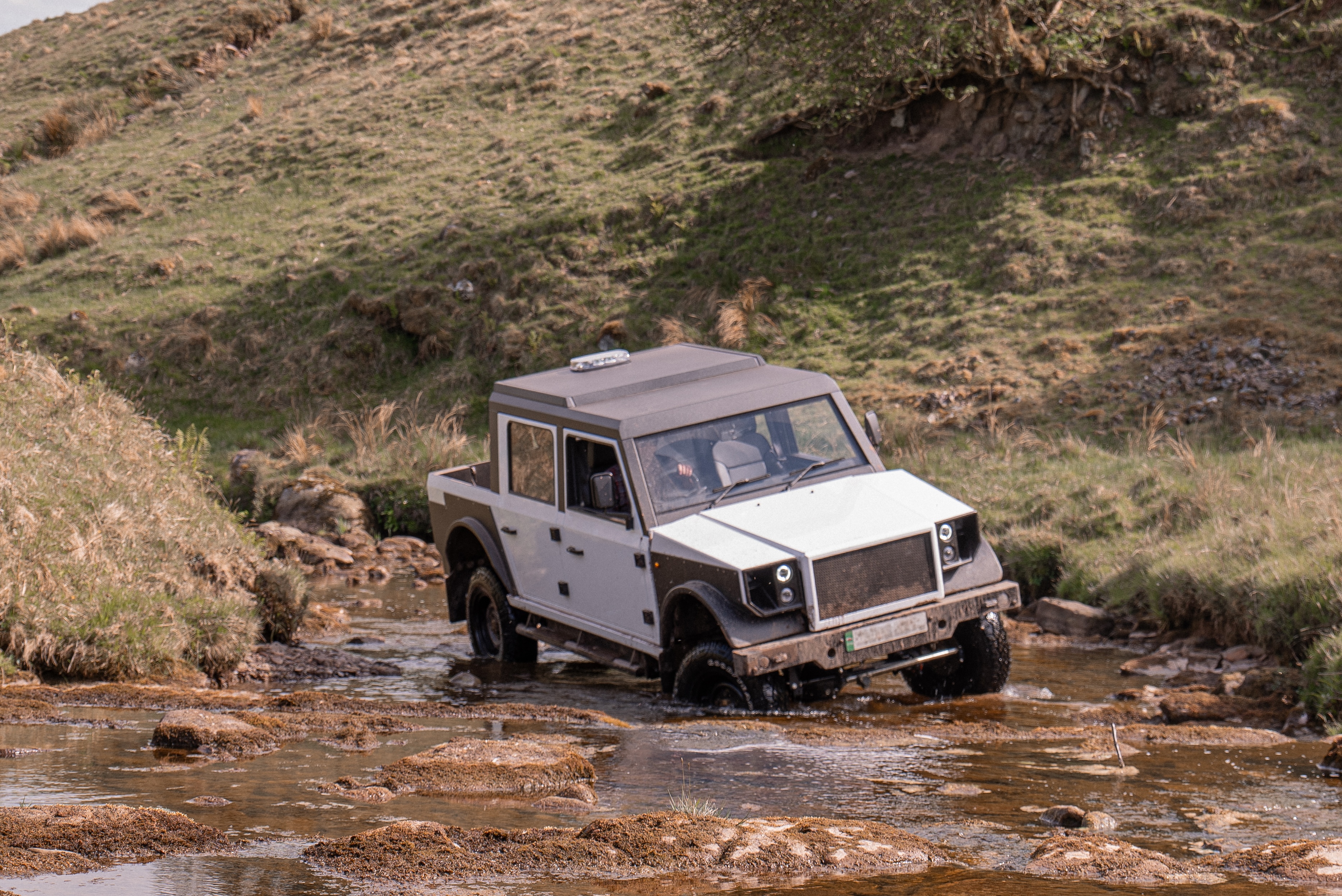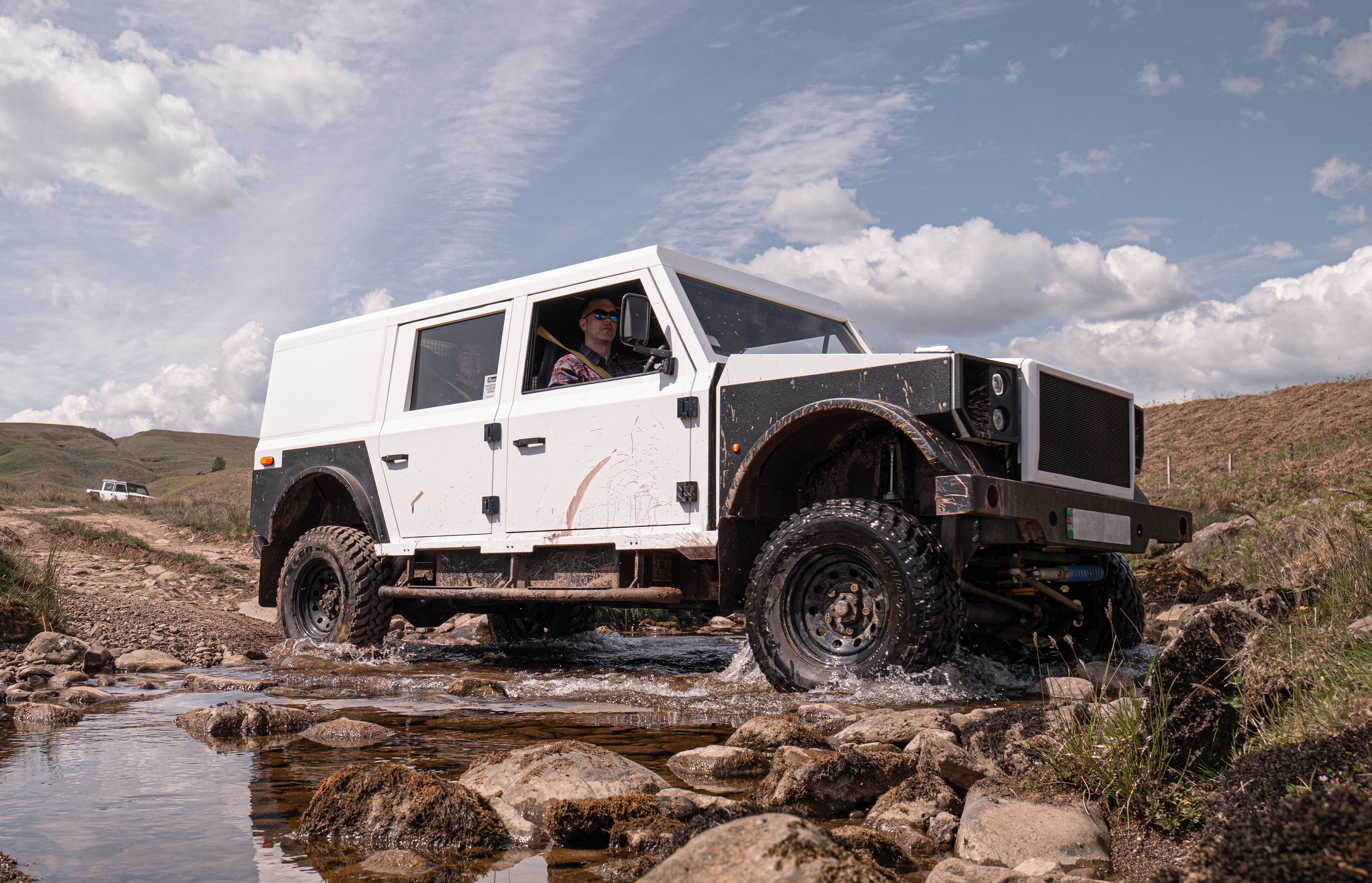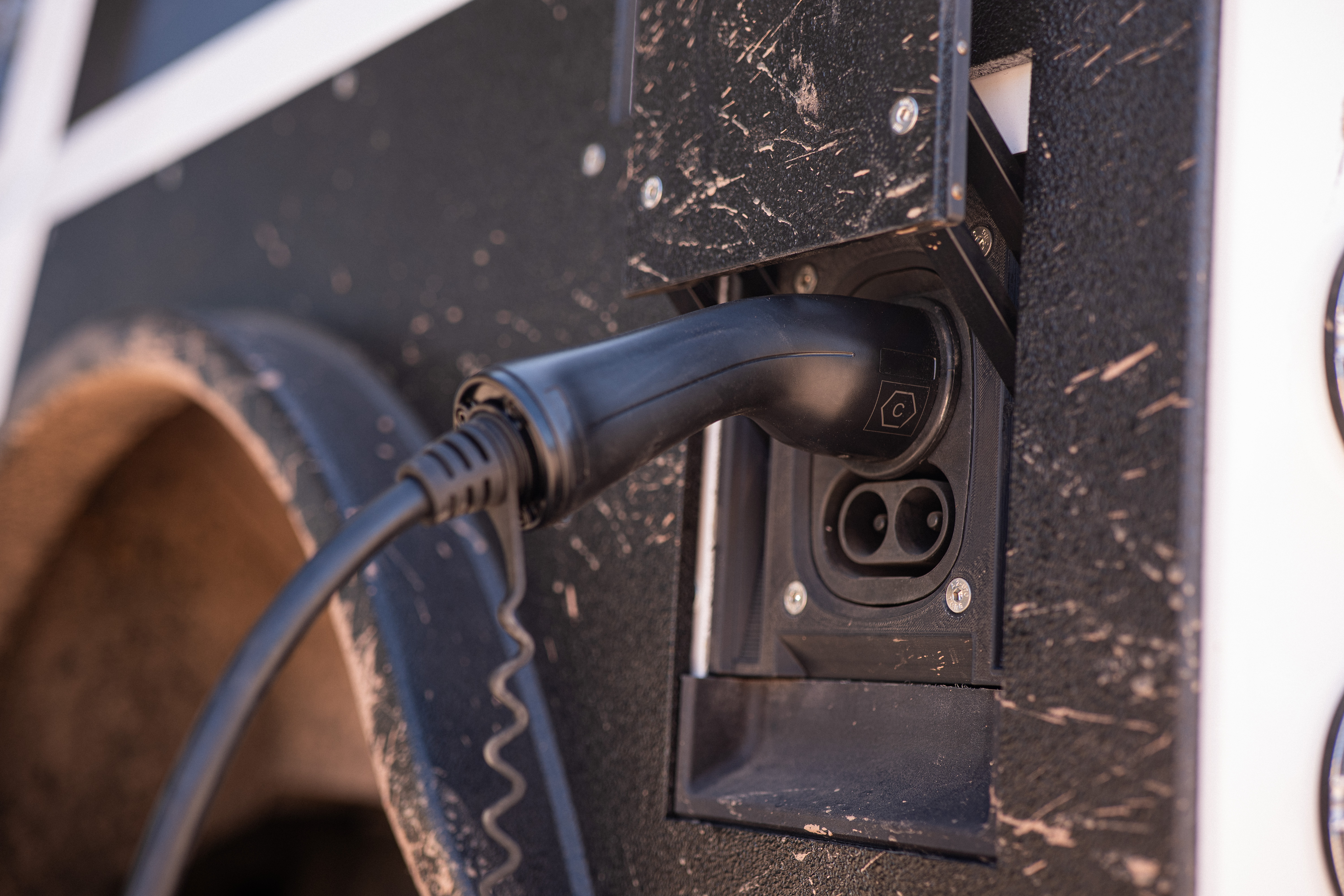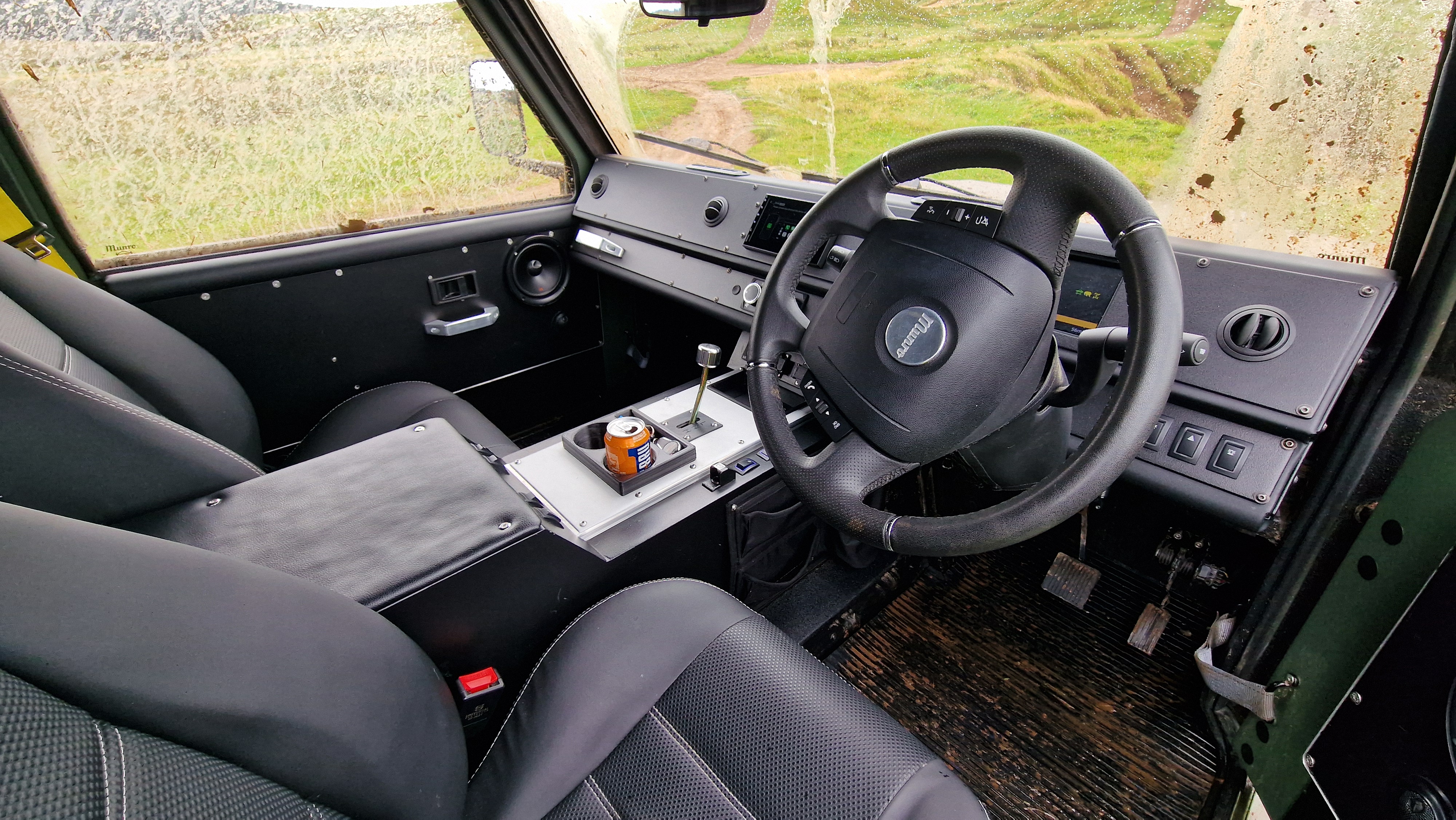That original Munro Mark 1 that first brought the company into the headlines back in 2022, had a 61.2kWh (usable) battery and a 220kW motor and could deliver up to 141 miles, or for an extra £10,000, you could have a larger 82.4kWh battery and a 186-mile range.
Things then went quiet as the Mark 1 was redesigned to make it look a little less awkward, and now it's here - refreshed and roaming wild in the Scottish countryside as the Munro Series-M. This is a proper working vehicle that's being targeted more for heavy duty, commercial use with farmers, mountain rescue teams, the coastguard and the like, so Munro is under no illusion that the Series-M is about to steal sales from the Skoda Enyaq. It's a very different beast to your average electric family SUV, and deliberately so!
Range, battery and charging
Two trims are available in the Munro Series-M line-up: the M170 and M280. Both get a lithium-ion NMC battery with an 85kWh usable capacity (88.32kWh total), meaning a rather poor 170-mile WLTP range. What’s worse, however, is its 2.0 miles per kWh consumption. It is a lofty off-roader, I know, but you get better than that in rivals like the electric Mercedes G-Wagon and Range Rover.

Charging speeds peak at 130kW when plugged into a DC rapid charger, meaning a 15-80 per cent charge will take around 30 minutes. Likewise, the M170 and M180 also have 6.6kW AC charging capability and a heat pump as standard, although you’ll still need to pay an additional £228 for an AC charging cable.
With its agricultural-like physique, you would expect the Munro to also come with vehicle-to-load (V2L) tech as standard, but you’ll also need to pay an extra £1,695 for that. Ticking that box adds 2500W of 240V AC power via two 13-amp domestic sockets, however.
Practicality and boot space
Like the Defender, passenger space is strong with good head and legroom all around, and back-seat passengers have loads of room to spread out thanks to no transmission tunnel. I absolutely love the three rear independent Recaro-style seats, too.

Its loading area is even more impressive. Opting for either trim level gets you a one-tonne, 1600-litre payload, while forking out for the more powerful M280 increases the towing capacity from 2.2 tonnes to 3.5 tonnes. In comparison, the Defender will also tow up to 3.5 tonnes but can only carry up to an 800kg payload.
Buyers can also choose between enclosed box and pick-up body styles at no extra cost, and if more storage is needed, there’s an optional roof rack complete with a ladder.
Interior, design/styling and technology
It’s worth remembering that the Munro Series-M is aimed at the mountain rescue, military, and mining industries, and this means you won’t find many creature comforts or suede door cards. However, everything in the Munro's cabin can be easily wiped down after a mucky day out, and the switch gear is designed to last.
That said, the cabin is filled with riveted tough-looking black plastic and aluminium, the centre console has a two-speed transfer box lever, and there are various grab handles thrown in for good measure. It’s a perfect example of function over beauty.
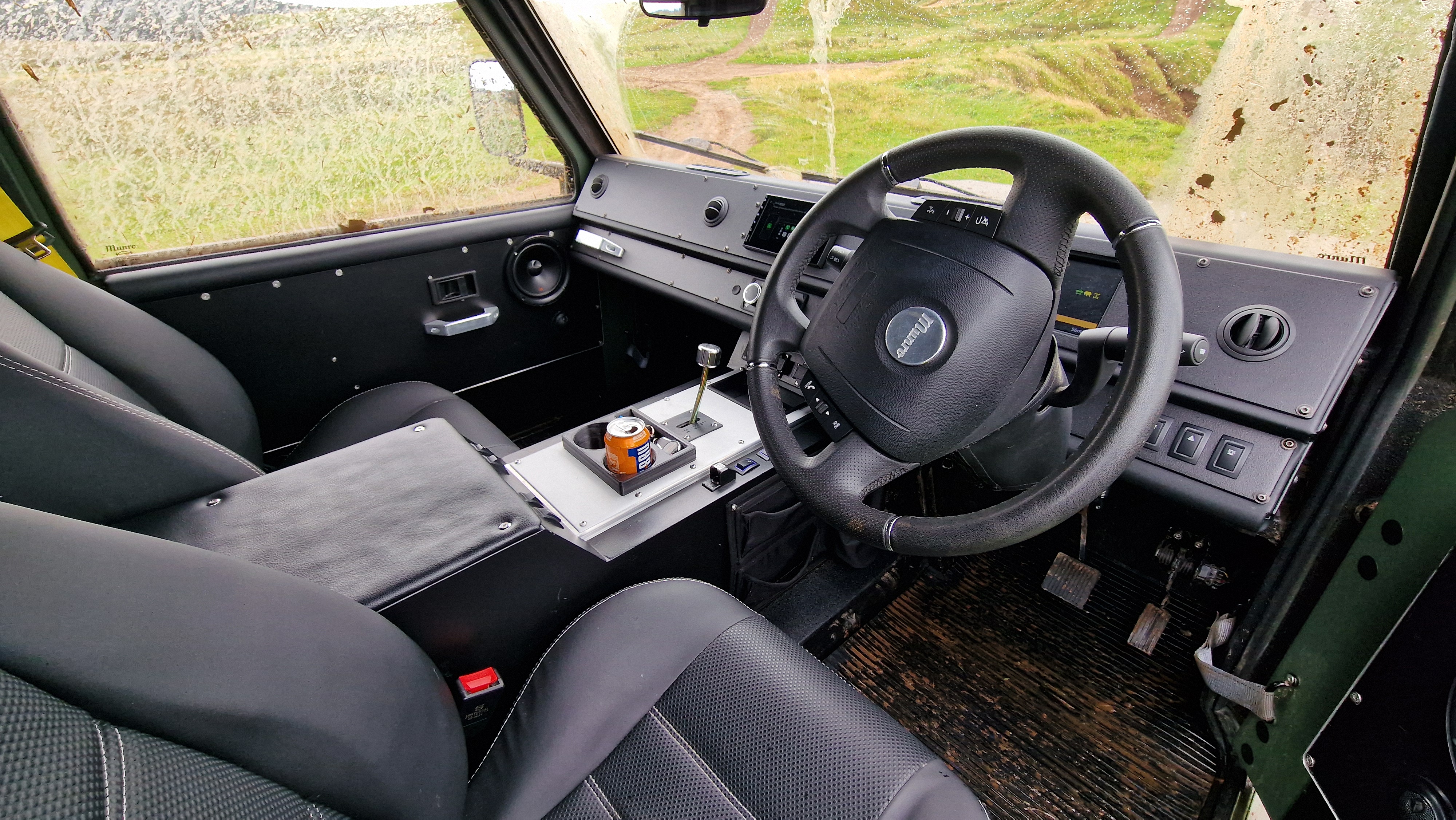
You also get a fairly basic nine-inch touchscreen, which features wireless Android Auto and Apple CarPlay. And the steering wheel, robbed from a Fiat Ducato van, has radio volume and phone call control.
Spartan it may be, but the Munro has everything you really need, including heated seats and a heated windscreen. You can add various options, if you so choose, including a Cold Climate pack for £1,225that helps heat the car below 50 degrees Celsius, and a reversing camera with front and rear parking sensors for £325, a recommended option considering how large the Munro is.
While off-roading in Drumclog, an off-road centre in Scotland, we hit various large puddles, which caused water to leak directly onto my foot. So quality is still slightly off, but its materials look and feel durable.
Motors, performance and handling
If you plan on making the most of the Munro’s payload and towing capacity, you’re better off with the M280. This has a 280kw (375bhp) 700Nm motor versus the M170’s 170kW (227bhp) 600Nm motor.
Unlike conventional electric cars, which have a motor on one axle or both, the Munro uses a single centralised motor to drive all four wheels, and the only difference separating the two trims is that the M280 uses a dual inverter versus the M170’s single inverter.
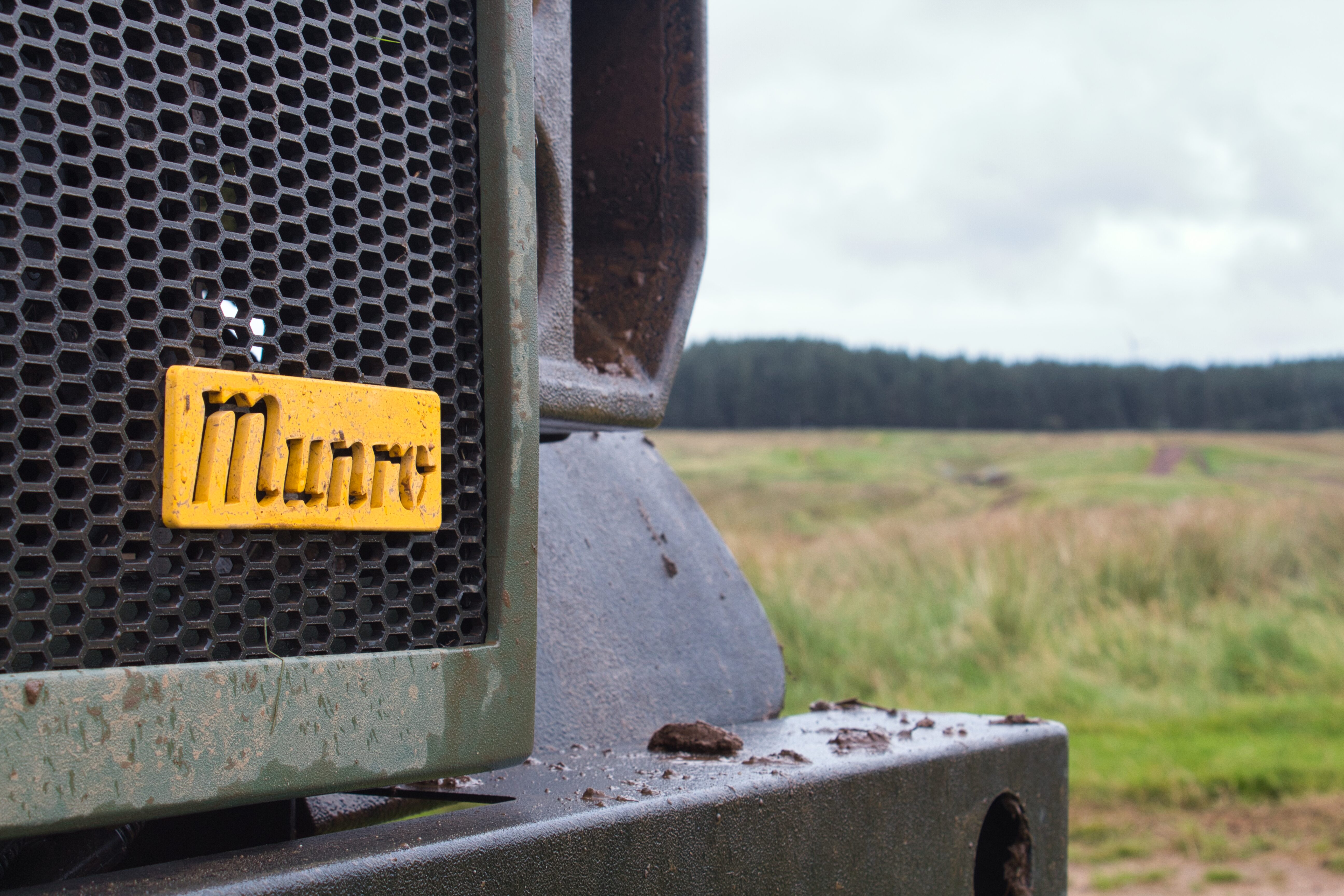
All of this means the M280 is no slouch with 0-62mph taking six seconds, but you don’t buy a Munro to win drag races. It comes alive on the rougher stuff with only a slight throttle jab needed to climb mucky 84-degree slopes. Sink the throttle, and it’ll spin the wheels and throw muck everywhere — it’s hilarious.
It’ll also wade through 800mm of water thanks to its 480mm ground clearance and chunky 16-inch all-terrain tyres, and depending on what you plan on using it for, you can also specify different mud-terrain tyres at additional cost.
I will add that our Munro test car was an enclosed box variant, which fed squeaks and rattles through the cabin over each rut, but I got a feeling that’s part of the Munro’s charm. And unlike a Defender, you also wouldn’t be scared to hammer any of its flat panels back into shape if you hit something larger than the Munro.
It also has clever hill descent technology. Holding the brake at the top of a hill before releasing it causes the Munro to descend slowly without the need for fancy buttons or levers, unlike the Ineos Grenadier. The driver can also lock the centre differential by pressing a button on the dashboard.
Running costs and pricing
It’s difficult to place the Munro as it has no direct all-electric rival, but it’s expensive at £75,995 when compared to an equivalent Land Rover Defender PHEV.
The Defender can also climb steep hills and wade through rivers, but it offers more creature comforts as standard and is backed by a three-year warranty; Munro hasn’t disclosed its warranty.
The Munros’ options list is also huge. Want a locking front and rear differential? That’ll cost £1,500. Want seat covers and rubber mats? That’ll be £804. With every option ticked on the entry-level M170, the total price is £102,000. That’s a lot.
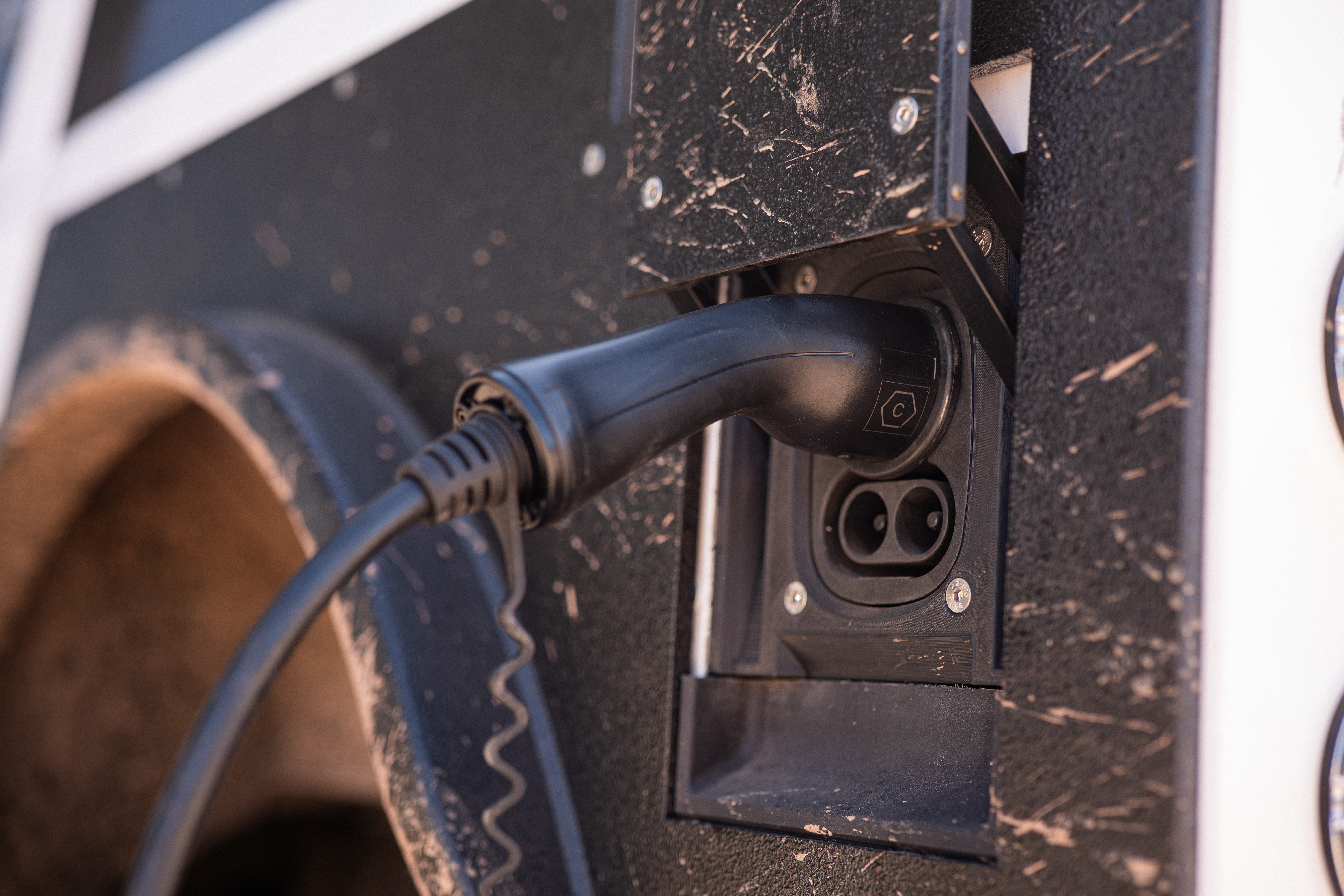
Verdict
I’m Scottish, and proud to have experienced the Series-M in its natural habitat. However, Munro still has a lot of refining to do; a car built for wading puddles shouldn’t leak when doing so.
Then there’s the range. Sure, it’s a heavy car, but so is a Kia EV9, and that still manages to deliver between 313- and 349 miles. And finally, if you’re looking for a daily driver, look elsewhere or at least ensure you have plenty of paracetamol on board.
For those who have cash burning a hole in their pocket and enjoy off-roading, then look no further than the Munro Series-M.









 Max charging rate: 130kW
Max charging rate: 130kW
